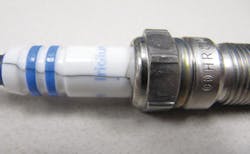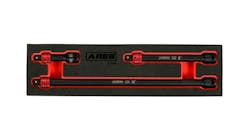Once a relatively simple task for automotive technicians, spark plug installation on modern vehicles requires a great deal of precision and care. This is especially the case with late-model vehicles with high-tech engines that have very little tolerance for improper installation or use of spark plugs.
Apply the proper torque
When installing spark plugs, a technician must be aware of the torque specification for that particular plug. All Bosch Spark Plug packages, for example, specify a published ft/lb torque rating that needs to be applied using a torque wrench.
It is important to remember that either over-torquing or under-torquing a spark plug will affect the quality of the installation and the performance of the vehicle’s engine.
If a spark plug is under-torqued, it will be loose in the cylinder and, as a result, combustion gases will be allowed to escape from the engine instead of working to power it. Furthermore, a loose spark plug can be damaged by engine vibrations.
Many spark plugs that are submitted for warranty claims are damaged due to under-torquing – which may not be covered under warranty.
On the other hand, over-torquing a spark plug has equally damaging effects. If too much pressure is put on the seat of the spark plug, it will damage the insulator, the shell, and other components of the plug. Such damage leads to premature failure of the spark plug and again, loss of engine performance – and is most likely not covered under warranty.
While Bosch does offer guidelines for proper installation of spark plugs without a torque wrench, the only correct way to install a spark plug and ensure proper functioning, is by using a torque wrench to tighten the plug to the proper ft/lb of pressure.
Spark plug gap
Another important factor in ensuring proper functioning of the spark plug is making sure that the gap is correct. Spark plug gap is the distance from the center electrode tip to the ground electrode. This gap is the area in which the electric spark is generated and the flame kernel forms to ignite the air-fuel mixture in the cylinder. If the gap is too small, the flame kernel will not grow and will leave the air-fuel mixture unburned, reducing engine performance and gas mileage.
On the other hand, if the gap is too large, there won’t be enough electricity provided to create a spark. This will lead to a misfire. In the past, technicians would have to manually check and adjust the gap to a precise measurement to ensure proper engine performance.
All Bosch Iridium, Double Platinum, and Platinum Spark Plugs come pre-gapped from the factory to save time and to ensure the proper gap for the application.
Information provided by Robert Bosch, LLC


